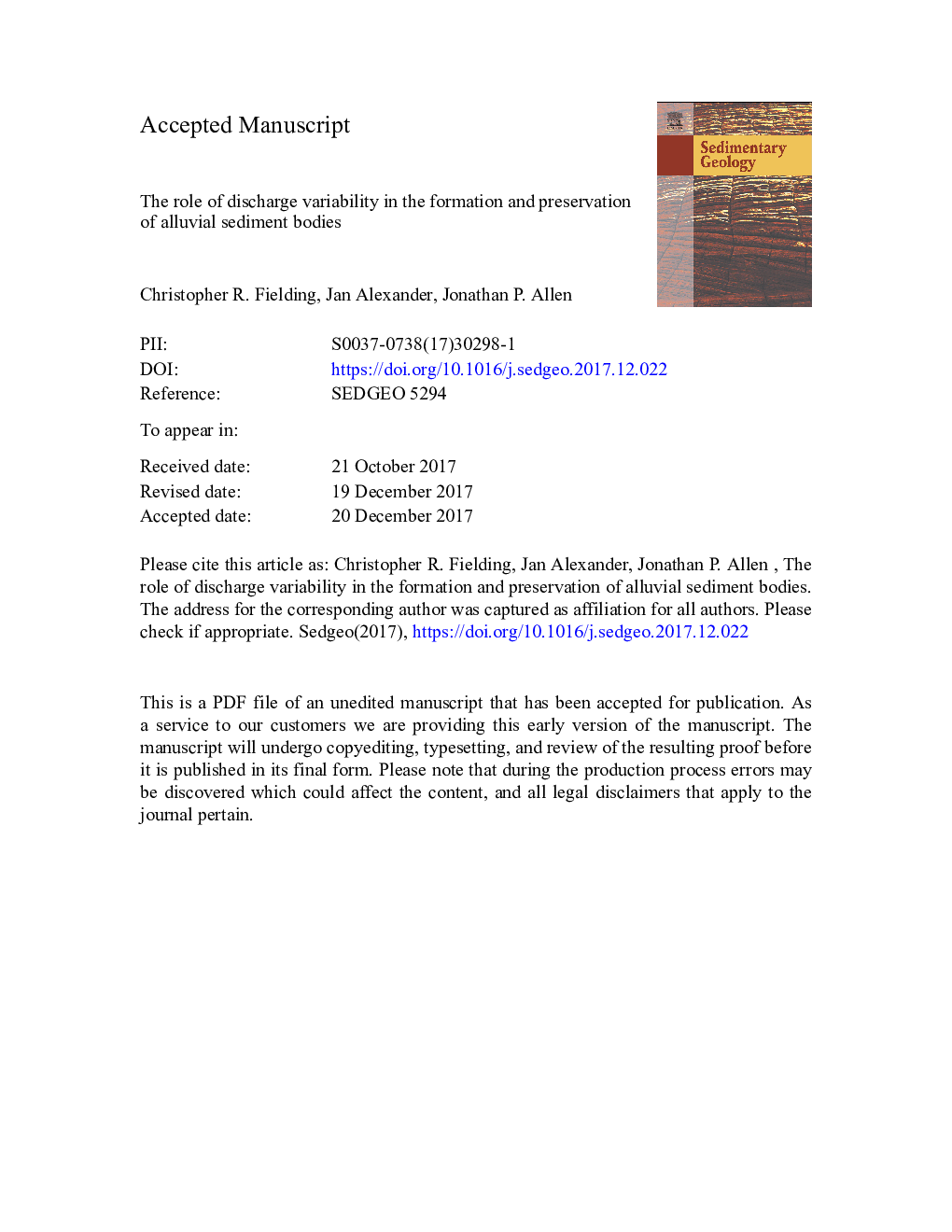| Article ID | Journal | Published Year | Pages | File Type |
|---|---|---|---|---|
| 8908535 | Sedimentary Geology | 2018 | 72 Pages |
Abstract
Extant, planform-based facies models for alluvial deposits are not fully fit for purpose, because they over-emphasise plan form whereas there is little in the alluvial rock record that is distinctive of any particular planform, and because the planform of individual rivers vary in both time and space. Accordingly, existing facies models have limited predictive capability. In this paper, we explore the role of inter-annual peak discharge variability as a possible control on the character of the preserved alluvial record. Data from a suite of modern rivers, for which long-term gauging records are available, and for which there are published descriptions of subsurface sedimentary architecture, are analysed. The selected rivers are categorized according to their variance in peak discharge or the coefficient of variation (CVQp = standard deviation of the annual peak flood discharge over the mean annual peak flood discharge). This parameter ranges over the rivers studied between 0.18 and 1.22, allowing classification of rivers as having very low (< 0.20), low (0.20-0.40), moderate (0.40-0.60), high (0.60-0.90), or very high (> 0.90) annual peak discharge variance. Deposits of rivers with very low and low peak discharge variability are dominated by cross-bedding on various scales and preserve macroform bedding structure, allowing the interpretation of bar construction processes. Rivers with moderate values preserve mostly cross-bedding, but records of macroform processes are in places muted and considerably modified by reworking. Rivers with high and very high values of annual peak discharge variability show a wide range of bedding structures commonly including critical and supercritical flow structures, abundant in situ trees and transported large, woody debris, and their deposits contain pedogenically modified mud partings and generally lack macroform structure. Such a facies assemblage is distinctively different from the conventional fluvial style recorded in published facies models but is widely developed both in modern and ancient alluvial deposits. This high-peak-variance style is also distinctive of rivers that are undergoing contraction in discharge over time because of the gradual annexation of the channel belt by the establishment of woody vegetation. We propose that discharge variability, both inter-annual peak variation and “flashiness” may be a more reliable basis for classifying the alluvial rock record than planform, and we provide some examples of three classes of alluvial sediment bodies (representing low, intermediate, and high/very high discharge variability) from the rock record that illustrate this point.
Keywords
Related Topics
Physical Sciences and Engineering
Earth and Planetary Sciences
Earth-Surface Processes
Authors
Christopher R. Fielding, Jan Alexander, Jonathan P. Allen,
